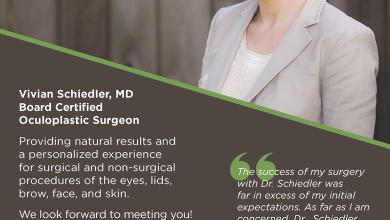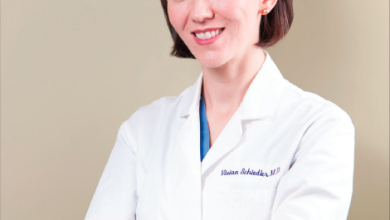Bumps & Lumps
I see a lot of people with growths on their lids. Sometimes they discover the spot themselves. But most times they are referred to me by another eye physician for a second opinion. A lot of these bumps and lumps are bothersome or unsightly and can be removed with a surprisingly comfortable technique. Most are benign cysts, skin tags, warts, and sun damage spots. However, skin cancer is on the rise and eyelids are not immune.
The lower lid is more exposed to ultraviolet rays and thus is more often affected by skin cancer than the upper lid. Basal cell carcinoma is the most common skin cancer by far. The good news is that this type of skin cancer does not spread through the body like other cancers. The bad news is that it keeps growing and destroying tissue in its path. The longer it is left to grow, the more tissue needs to be removed and the bigger the repair. Fortunately, I have the advantage of having a slit lamp, which helps me examine the eyes and lids under high magnification. This is often helpful in distinguishing between benign non-worrisome lesions and the ones that need removal.
Squamous cell carcinoma is the next most common skin cancer, and like basal cell carcinoma, it does not spread to distant parts of the body, but it does tend to grow faster than basal cell, and thus it is considered more aggressive. Melanoma is the skin cancer that makes everyone nervous. It can spread to liver, bone, and brain through the bloodstream, and early detection is critical. Any spot that is growing, darkening, getting fuzzy borders, is scaly, bleeding, crusty, or painful should be evaluated right away. Early treatment affords the best outcomes.
So what can one do to prevent and avoid skin cancer in the first place? For starters, whenever you are able, avoid prolonged sun exposure between 10am and 2pm when the sun is directly overhead. Never use a tanning bed. Protect your delicate eyelid skin with sunglasses that block out UVA (aging) and UVB (burning) rays. Keep an extra pair in your car. Look for sunblock that contains zinc oxide. This is a natural mineral, safe on sensitive skin and children 6 months or older. It is now comes in elegant formulations that are much more acceptable than the white pasty ones from the 1970s. Nanoparticles make this possible and these molecules are too large to be absorbed into skin. They sit on top of the skin and reflect the UV rays off the surface. This is why zinc oxide, as a physical blocker, is the best ingredient to look for. It blocks the widest range of wavelengths from penetrating the skin, whereas chemical ingredients like avobenzone or oxybenzone are absorbed and much less effective at preventing collagen loss and DNA damage. Don’t forget to use sunblock when skiing or boating as those surfaces reflect even more UV rays onto your face. Diet plays an important role as well. An Australian study of 1360 adults that controlled for skin color and sun exposure showed that a higher consumption of leafy green vegetables reduced the risk of squamous cell carcinoma by 54% and that a high meat and fat intake increased the risk of SCC by 2 to 4 fold. We know leafy greens are chock full of a vast array of protective anticancer and antioxidant molecules. So here’s raising a green smoothie toast to your good skin health!
Vivian Schiedler, MD is an oculofacial plastic surgeon, specializing in the support structures of the eyes as well as facial rejuvenation. For appointments, call (541) 708-6393.


